Enzymes(酶)
Enzymes are very efficient and specific catalyst proteins which react with 1 or few types of substrates in biochemical reactions and are responsible for bringing about almost all of the chemical reactions in living organisms. Enzymes speed up reactions by providing an alternative reaction pathway of lower activation energy. Without enzymes, reactions take place at a rate far too slow for the pace of metabolism which means that they speed up the chemical reactions in living things.
There are 2 types of enzymes, ones that help join specific molecules together to form new molecules & others that help break specific molecules apart into separate molecules. Enzymes play many important roles ouside the cell as well. One of the best examples of this is the digestive system. For instance, it is enzymes in your digestive system that break food down in your digestive system break food down into small molecules that can be absorbed by the body. Some enzymes in your digestive system break down starch, some proteins and others break down fats. The enzymes used to digest our food are extra-cellular since they are located outside our cells & enzymes inside our cells are intra-cellular enzymes. Enzymes are used in ALL chemical reactions in living things; this includes respiration, photosynthesis, movement growth, getting rid of toxic chemicals in the liver and so on. Enzymes are proteins that must have the correct structure to be active. They are very easily affected by heat, pH and heavy metal ions.
Ribonucleoprotein enzyme catalytic activity is located in the protein part but for some the catalytic activity is in the RNA part. A catalyst is any substance which makes a chemical reaction go faster, without itself being changed. A catalyst can be used over and over again in a chemical reaction and does not get used up.
Enzymes lower the amount of activation energy needed by binding to the reactants of the reaction they catalyze, thus speed up the reaction and can process millions of molecules per second. Enzymes are typically large proteins with high molecular weight that permit reactions to go at conditions that the body can tolerate.
Enzyme nomenclature is based on what the enzyme reacts with & how it reacts along with the ending ase.
Enzymes must get over the activation energy hurdle.
Enzymes change how a reaction will proceed which reduces the activation energy and makes it faster. The more we increase the enzyme concentration the faster the reaction rate for non-catalyzed reactions. Enzymes that are catalyzed reactions also increase reaction rate at higher level of concentration but up to a certain point called Vmax which means that the enzyme has reached its maximum point. The reaction is limited by both the concentrations of the enzyme and substrate. Enzymes as catalysts take part in reactions which provide an alternative reaction pathway. Enzymes do not undergo permanent changes and remain unchanged at the end of the reaction. They only change the rate of reaction, not the position of the equilibrium.Enzymes as catalysts are highly selective by only catalysing specific reactions due to the shapes of the enzyme’s molecule.
Enzymes contain a globular protein part called apoenzyme and a non-protein part named cofactor or prosthetic group or metal-ion-activator. Changes in temperature and pH have great influence on the intra- and intermolecular bonds that hold the protein part in their secondary and tertiary structures.
Examples of cofactors are 1. Prosthetic group that are permanently bound to the enzyme. 2. Activator group which are cations (positively charged metal ions) & temporarily bind to the active site of the enzyme. 3.Coenzymes, usually vitamins or made from vitamins which are not permanently bound to the enzyme molecule, but combine with the enzyme-substrate complex temporarily. Enzymes require the presence cofactors before their catalytic activity can be exerted. This entire active complex is referred to as the holoenzyme.
Without enzymes, our guts would take weeks to digest our food, our muscles, nerves and bones would not work properly and so on…
Main Enzyme category groups:
Oxidoreductases:
All enzymes that catalyse oxido-reductions belong in this class. The substrate oxidized is regarded as a hydrogen or electron donor. The classification is based on 'donor:acceptor oxidoreductase'. The common name is 'dehydrogenase', wherever this is possible; as an alternative, 'acceptor reductase' can be used. 'Oxidase' is used only where O2 is an acceptor. Classification is difficult in some cases, because of the lack of specificity towards the acceptor.
Transferases:
Transferases are enzymes that transfer a group, for example, the methyl group or a glycosyl group, from one compound (generally regarded as donor) to another compound (generally regarded as acceptor). The classification is based on the scheme 'donor:acceptor grouptransferase'. The common names are normally formed as 'acceptor grouptransferase' or 'donor grouptransferase'. In many cases, the donor is a cofactor (coenzyme) that carries the group to be transferred. The aminotransferases constitute a special case.
Hydrolases:
These enzymes catalyse the hydrolysis of various bonds. Some of these enzymes pose problems because they have a very wide specificity, and it is not easy to decide if two preparations described by different authors are the same, or if they should be listed under different entries. While the systematic name always includes 'hydrolase', the common name is, in most cases, formed by the name of the substrate with the suffix -ase. It is understood that the name of the substrate with this suffix, and no other indicator, means a hydrolytic enzyme. It should be noted that peptidases have recommended names rather than common names.
Lyases:
Lyases are enzymes that cleave C-C, C-O, C-N and other bonds by means other than by hydrolysis or oxidation. They differ from other enzymes in that two (or more) substrates are involved in one reaction direction, but there is one compound fewer in the other direction. When acting on the single substrate, a molecule is eliminated and this generates either a new double bond or a new ring. The systematic name is formed according to 'substrate group-lyase'. In common names, expressions like decarboxylase, aldolase, etc. are used. 'Dehydratase' is used for those enzymes that eliminate water. In cases where the reverse reaction is the more important, or the only one to be demonstrated, 'synthase' may be used in the name.
Ligases:
Ligases are enzymes that catalyse the joining of two molecules with concomitant hydrolysis of the diphosphate bond in ATP or a similar triphosphate. 'Ligase' is often used for the common name, but, in a few cases, 'synthase' or 'carboxylase' is used. 'Synthetase' may be used in place of 'synthase' for enzymes in this class.
Products for Enzymes
- 41701(11)
- Activating Transcription Factor(3)
- Adenylate Kinase(10)
- AHCY(3)
- Aldolase(9)
- Asparaginase(5)
- Aurora Kinase(18)
- Beta Lactamase(3)
- Calcium and Integrin Binding(2)
- Calcium/Calmodulin-Dependent Protein Kinase(4)
- Carbonic Anhydrase(49)
- Casein Kinase(36)
- Cathepsin(52)
- Chitinase(5)
- Creatin Kinases(9)
- Cyclin(7)
- Cyclin-Dependent Kinase(18)
- Cyclophilin(23)
- Deaminase(14)
- Decarboxylase(12)
- Dehydrogenase(96)
- Discoidin Domain Receptor Tyrosine Kinase(2)
- DNA Polymerase(4)
- EGF Receptor(3)
- Endonuclease(6)
- Enolase(10)
- Enterokinase(5)
- Epimerase(3)
- Esterase(15)
- FGF Receptors(12)
- FK506 Binding Protein(10)
- Fructosamine 3 Kinase(2)
- Galactosidase(5)
- Glucosidase(32)
- Gluteradoxin(7)
- Glycogen synthase kinase(2)
- Glycosylase(10)
- Glyoxalase(3)
- Granzyme(7)
- Guanylate Kinase(2)
- Heparanase(2)
- Histone Deacetylase(3)
- Hydratase(10)
- Hydrolase(33)
- Hydroxylase(6)
- Isomerase(26)
- Jun N-terminal Kinase(1)
- Jun Proto-Oncogene(2)
- Kallikrein(26)
- Ligase(4)
- Lipase(14)
- Lipocalin(6)
- Lyase(9)
- LYVE1(3)
- Mitogen-Activated Protein Kinase(16)
- MMP(68)
- Mutase(11)
- Natural Enzymes(4)
- Nuclease(18)
- Nucleotidase(4)
- Nudix Type Motif(11)
- Other Enzymes(63)
- Oxidase(23)
- Oxygenase(12)
- Paraoxonase(3)
- Peptidase(41)
- Peroxiredoxin(10)
- Phosphatase(150)
- Phosphorylase(9)
- PI3-kinase(5)
- Polymerase(13)
- PPARG(2)
- Protease(15)
- Proteasome(54)
- Protein Kinase Akt1/PKB alpha(4)
- Protein Kinase-A(7)
- Protein Kinase-C(3)
- Protein Kinases(86)
- Protein Tyrosine Phosphatase(10)
- Reductase(60)
- Secreted Phospholipase A2(10)
- Serine Threonine Kinase(4)
- Sulfatase(8)
- Synthase(23)
- Synthetase(33)
- TGFBR(3)
- TGM2(3)
- TIMP(10)
- TPA(4)
- Transferase(156)
- Tyrosine Kinase(9)
- Ubiquitin Conjugating Enzyme(39)
- Uromodulin(4)
- VEGF Receptors(14)
- Transaminase(19)
- Hexokinase(6)
- TIE1(6)
- Cat.No. 产品名称 Information
-
GP21572
DsbC
Disulfide-Bond Isomerase Recombinant

-
GP21573
DTD1 Human
D-Tyrosyl-tRNA Deacylase 1 Human Recombinant

-
GP21574
DTD2 Human
D-Tyrosyl-tRNA Deacylase 2 Human Recombinant

-
GP22482
DTYMK Human
Deoxythymidylate Kinase Human Recombinant

-
GP21576
DUSP10 Human
Dual Specificity Phosphatase 10 Human Recombinant

-
GP21577
DUSP13 Human
Dual Specificity Phosphatase 13 Human Recombinant

-
GP21578
DUSP18 Human
Dual Specificity Phosphatase 18 Human Recombinant

-
GP21579
DUSP18 Human, Active
Dual Specificity Phosphatase 18 Human Recombinant, Active

-
GP21580
DUSP19 Human
Dual Specificity Phosphatase 19 Human Recombinant

-
GP21581
DUSP21 Human
Dual Specificity Phosphatase 21 Human Recombinant

-
GP21582
DUSP22 Human
Dual Specificity Phosphatase 22 Human Recombinant

-
GP21583
DUSP23 Human
Dual Specificity Phosphatase 23 Human Recombinant

-
GP21584
DUSP23 Human, Active
Dual Specificity Phosphatase 23 Human Recombinant, Active

-
GP21585
DUSP26 Human
Dual Specificity Phosphatase 26 Human Recombinant

-
GP21586
DUSP3 Human
Dual Specificity Phosphatase 3 Human Recombinant

-
GP21575
DUSP6 Human
Dual Specificity Phosphatase 6 Human Recombinant

-
GP21587
DUT Human
Deoxyuridine Triphosphatase Human Recombinant

-
GP21588
DUT Pyrococcus Fruriosus

-
GP22483
DYRK1A Human
Dual-Specificity Tyrosine-(Y)-Phosphorylation Regulated 1A Human Recombinant

-
GC72812
Ecallantide TFA
DX-88 TFA
Ecallantide TFA是一种特异性重组血浆激肽释放酶抑制剂。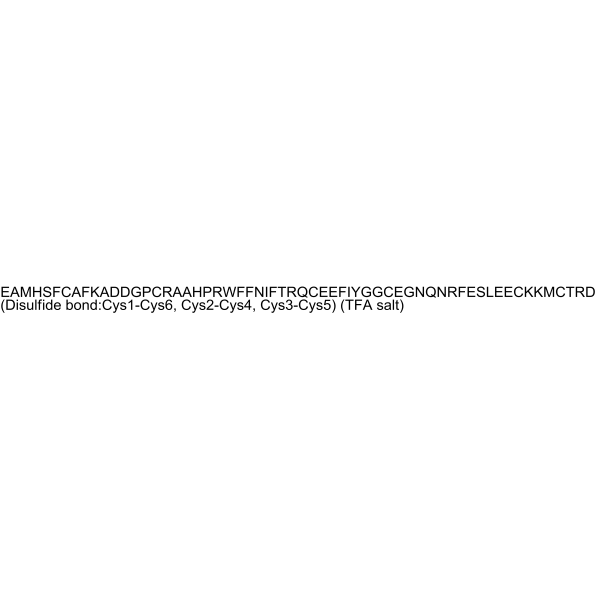
-
GP21589
ECH1 Human
烯酰辅酶 A 水合酶 1,人重组过氧化物酶体

-
GP21590
ECHDC1 Human
Enoyl CoA Hydratase Domain Containing 1 Human Recombinant

-
GP21591
ECHS1 Human
Enoyl CoA Hydratase, Short chain, 1, Mitochondrial Human Recombinant

-
GP21592
ECHS1 Human, Active
Enoyl CoA Hydratase, Short chain, 1, Mitochondrial, Human Recombinant, Active

-
GP21593
ECI1 Human
Enoyl-CoA Delta Isomerase 1 Human Recombinant

-
GP21594
Ecotin E.Coli
Ecotin E.Coli Recombinant

-
GC62948
Edaravone D5
MCI-186-d5
Edaravone D5 是 Edaravone 的氘代标记物。Edaravone 是一种有效的自由基清除剂,能够抑制大鼠与 MMP-9 有关的脑出血。
-
GC65260
EDP-305
EDP-305 是一种口服有效且选择性的 farnesoid X 受体 (FXR) 激动剂,其 EC50 值为 34 nM (CHO 细胞嵌合性 FXR) 和 8 nM (HEK 细胞全长 FXR)。EDP-305 显示出强大而持久的抗纤维化作用。EDP-305 可用于原发性胆道胆管炎 (PBC) 和非酒精性脂肪性肝炎 (NASH) 研究。
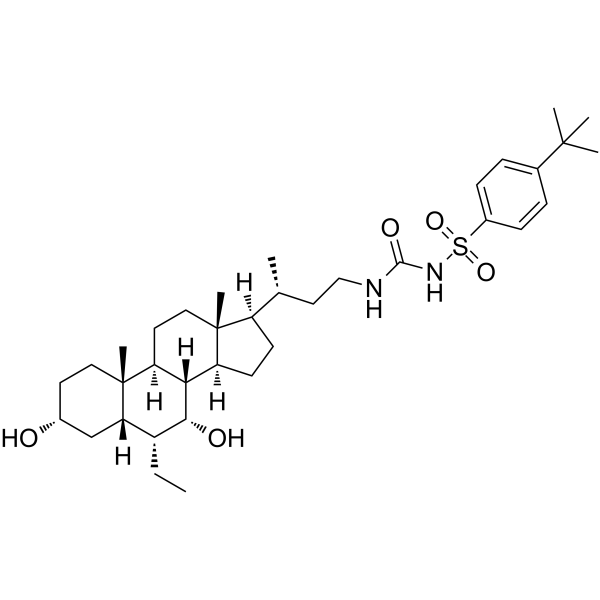
-
GP22485
EGFR Human Sf9
Epidermal Growth Factor Receptor Sf9 Human Recombinant

-
GP22486
EGFR Human Sf9, Active
Epidermal Growth Factor Receptor Human Recombinant Sf9, Active

-
GP22487
EGFR Human, CHO
Epidermal Growth Factor Receptor, CHO Human Recombinant

-
GC73753
EGFR/AURKB-IN-1
EGFR/AURKB-IN-1(化合物7)是双靶向EGFR/AURKB抑制剂,抑制L858R EGFR和AURKB的磷酸化,ic50值分别为0.07和1.1。

-
GP21595
ELAC1 Human
ElaC Ribonuclease Z 1 Human Recombinant

-
GP26146
ELANE Mouse
ELANE Mouse produced in Sf9 Insect cells is a single, glycosylated polypeptide chain (27-265a

-
GC72151
Elastase
Elastase是一种生化试剂,可用作生命科学相关研究的生物材料或有机化合物。
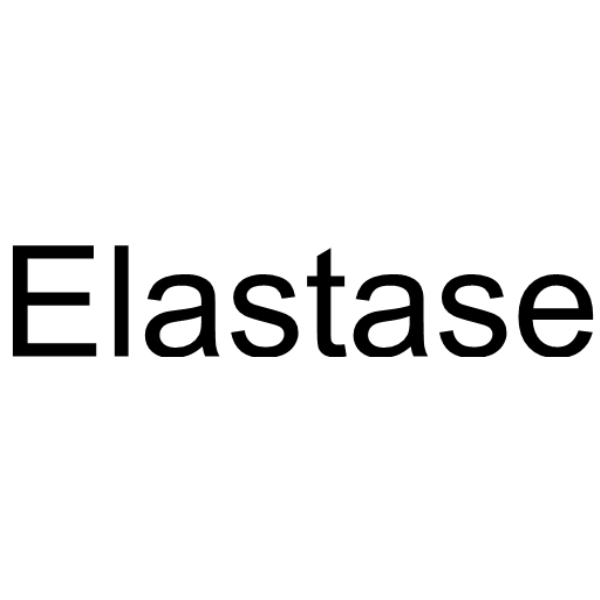
-
GC60802
Eleutherol
红葱酚
Eleutherol是从E.americana中分离得到的萘类化合物,具有抗真菌(antifungal)活性。Eleutherol抑制白假丝酵母菌,白色念珠菌,酿酒酵母和新型隐球菌的MIC值在7.8-250µg/mL之间。Eleutherol具有α-葡萄糖苷酶(α-glucosidase)抑制活性,IC50>1.00mM。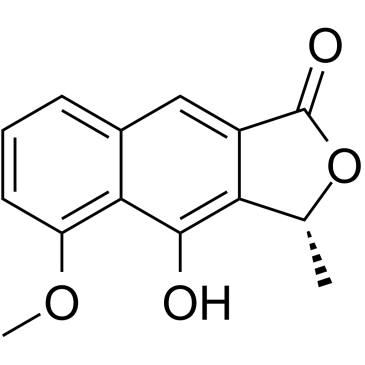
-
GC69068
ENMD-2076 Tartrate
ENMD-2076 Tartrate 是多靶点激酶抑制剂,抑制 Aurora A,Flt3,KDR/VEGFR2,Flt4/VEGFR3,FGFR1,FGFR2,Src,PDGFRα 的IC50 值分别为1.86,14,58.2,15.9,92.7,70.8,20.2 and 56.4 nM。

-
GP21596
ENO1 Human
Enolase-1 Human Recombinant

-
GP21597
ENO1 Mouse
Enolase-1 Mouse Recombinant

-
GP21598
ENO2 Human
Neuron Specific Enolase 2 Human Recombinant

-
GP21600
ENO2 Human, His
Neuron Specific Enolase 2 Human Recombinant, His Tag

-
GP21601
ENO2 Mouse
Neuronal Specific Enolase-2 Mouse Recombinant

-
GP21599
ENO2 Protein
Neurone Specific Enolase 2 Human

-
GP21602
ENO3 Human
Enolase-3 Human Recombinant

-
GP21603
ENOPH1 Human
Enolase-Phosphatase-1 Human Recombinant

-
GC73371
Enpp/Carbonic anhydrase-IN-2
Enpp/Carbonic anhydrase-IN-2是一种强效的Enpp和碳酸酐酶抑制剂,NPP1、NPP2、NPP3、CA-IX、CA-XII的IC50分别为1.13、1.07、0.74、0.33、0.68。
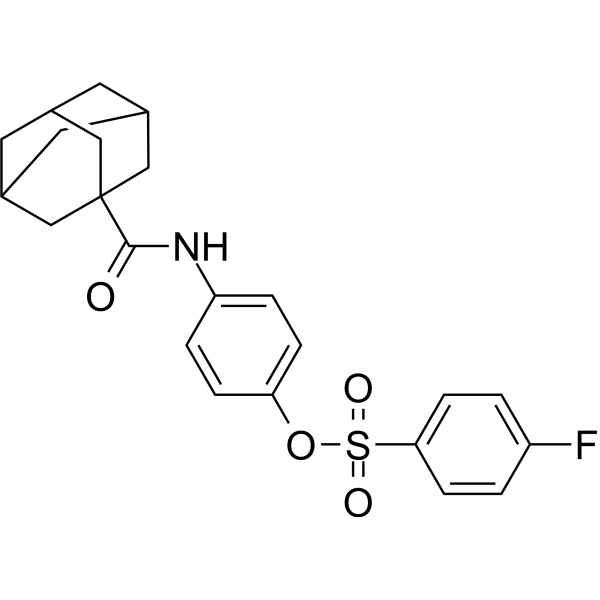
-
GP21604
ENPP1 Human
Ectonucleotide Pyrophosphatase Human Recombinant

-
GP26147
ENPP2 Human
ENPP2 Human Recombinant produced in HEK293 Cells is a single, glycosylated polypeptide chain containing 825 amino acids (49-863a

-
GP21605
Enterokinase Bovine
肠肽酶/肠激酶轻链牛重组体

-
GP21606
Enterokinase Bovine His
Enteropeptidase/ Enterokinase Bovine Recombinant His Tag





